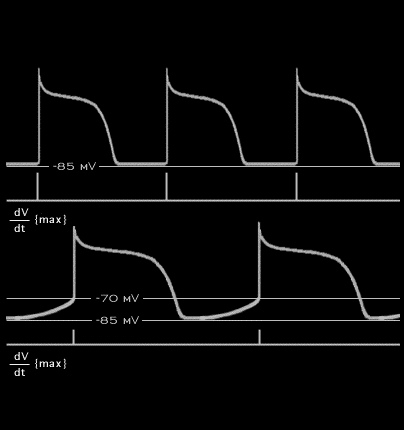
The mechanism underlying bradycardia dependent aberrancy is not totally understood. The most widely accepted theory postulates that at slow rates, some of the fibers in the conducting system develop slow spontaneous diastolic depolarization such that when stimulated, their membrane will have spontaneously depolarized to a less negative value (from -85 mV to –75 mV in the example shown here). This results in partial inactivation of the sodium inward current because of its dependence on the membrane voltage at the onset of depolarization. This will cause a decreased rate of rise of the action potential upstroke (dV/dt max) which, in turn, will result in slowed conduction in that portion of the conducting system. The voltage dependence of the sodium inward current will be discussed further below (see page 3.4.6)
